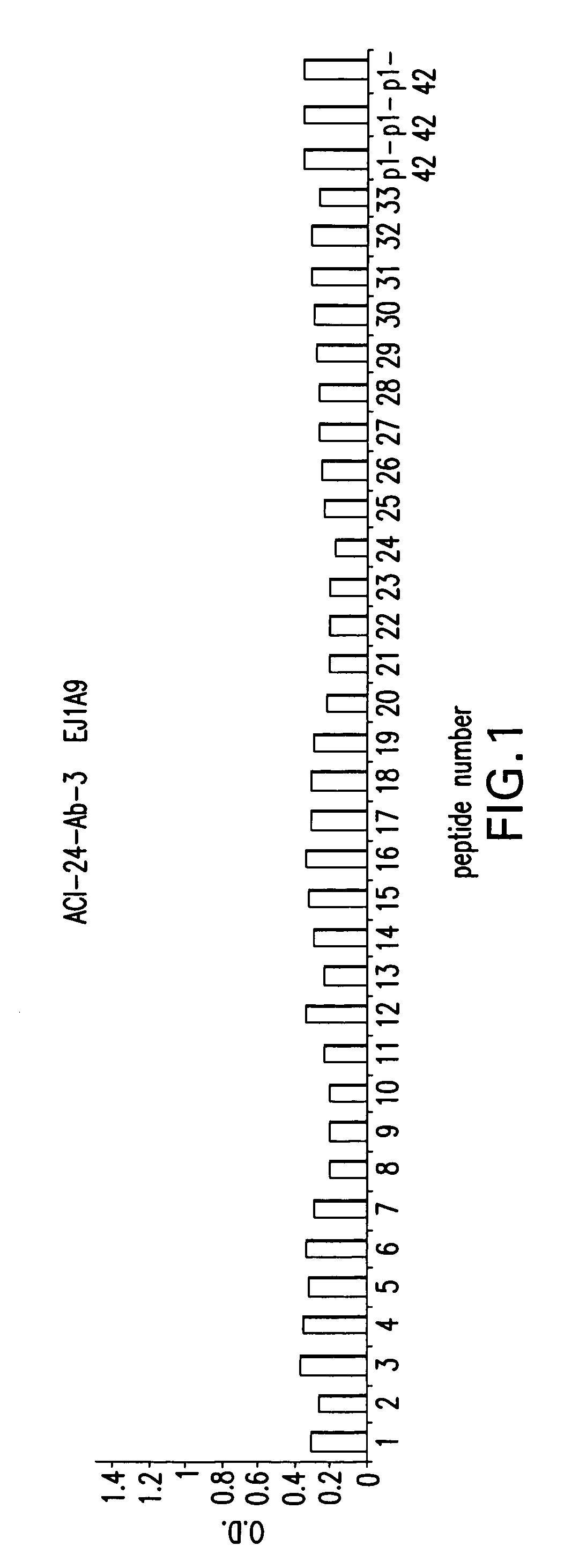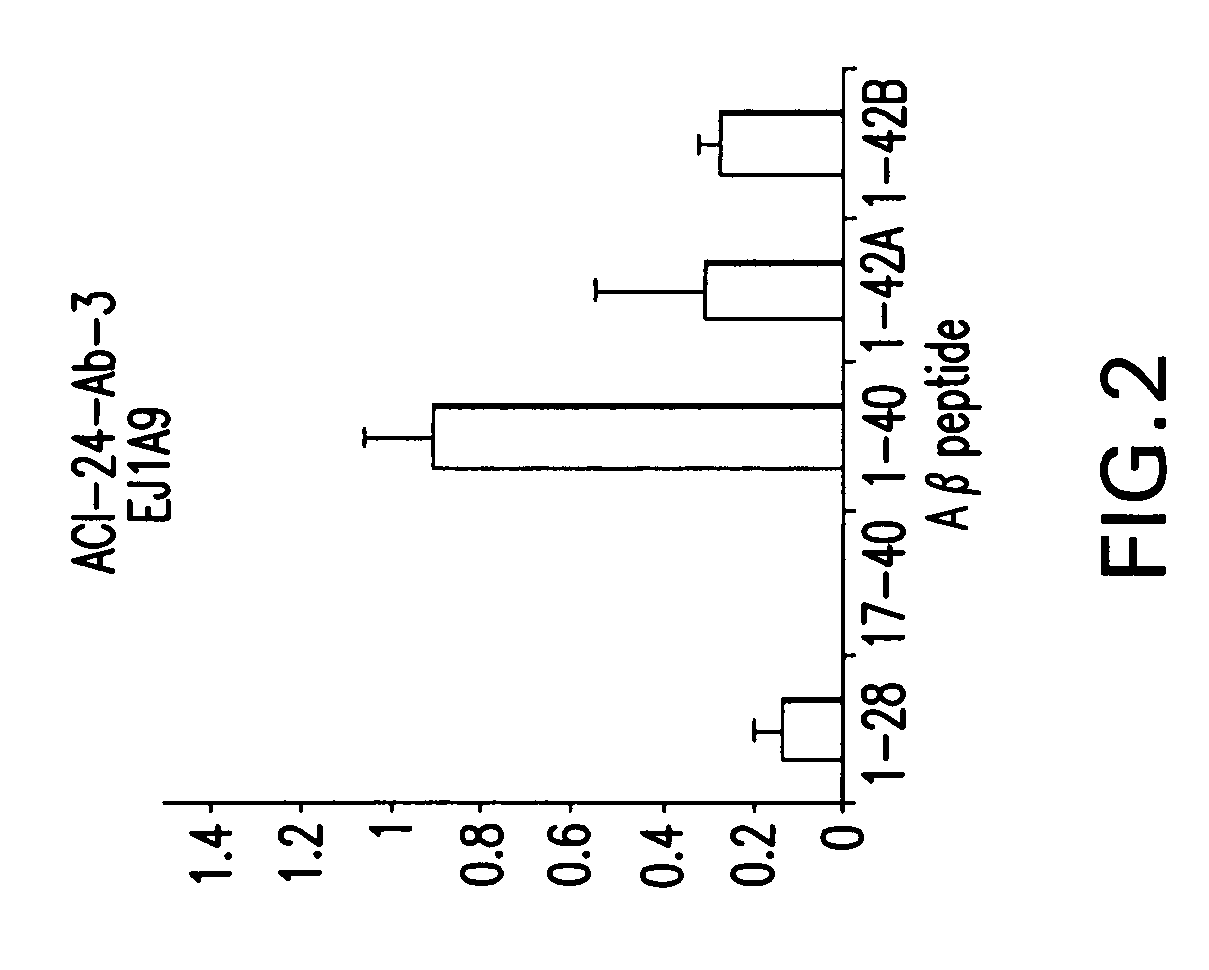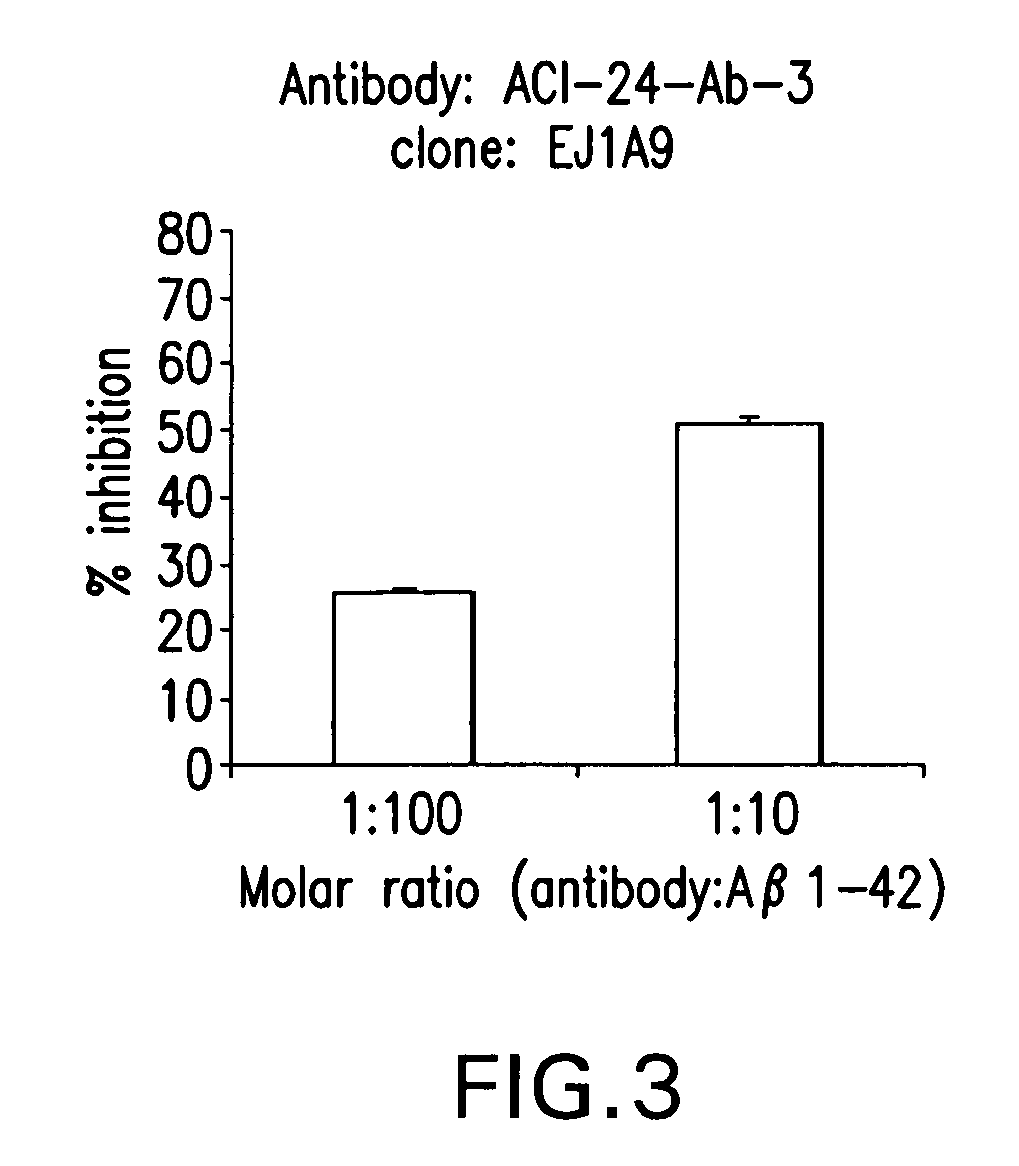Monoclonal antibody
a monoclonal antibody and antibody technology, applied in the field of monoclonal antibodies, can solve the problems of not being able to solve simple math problems, individuals may forget recent events, activities, and the names of familiar people or things, and achieve the effect of improving exposure and stabilizing
- Summary
- Abstract
- Description
- Claims
- Application Information
AI Technical Summary
Benefits of technology
Problems solved by technology
Method used
Image
Examples
example 1
Methods for Making Palmitoylated Aβ1-15 Supramolecular Antigenic Constructs
Synthesis of Tetra(palmitoyl Lysine)-Aβ1-15 Peptide Antigen
[0322]The palmitoylated amyloid 1-15 peptide was synthesized following an improved previously reported method (Nicolau et. al. 2002). This new approach involved on-resin grafting of palmitic acid to the terminal Lys residues of the pre-formed peptide rather than stepwise solid-phase synthesis incorporating the modified amino acid 9-fluorenylmethoxycarbonyl (Fmoc)-Lys(Pal)-OH. This new approach improves coupling efficiency and gives a product of considerably higher purity. Thus, the orthogonally protected amino acid Fmoc-Lys(Mtt)-OH was attached to a Wang resin using [2-(1H-benzotriazol-1-yl)-1,1,3,3-tetramethyluronium hexafluorophosphate] (HBTU) coupling chemistry. The Fmoc group was removed using 20% piperidine in DMF and a second residue of Fmoc-Lys(Mtt)-OH was coupled. Standard automated peptide synthesis using Fmoc / tBu chemistry and standard side-...
example 2
Antibodies Elicited by Supramolecular Antigenic Constructs Manufacturing of mAbs Raised Against Palmitoylated Aβ1-15 Supramolecular Antigenic Construct
[0323]Palmitoylated antigen (ACI-24, Aβ1-15) was used for the immunization in C57BL / 6 mice in 2 week intervals. 10-12 animals were immunized with each antigen (Injection vol: 200 μl containing 8 nmoles peptide). Last injection was performed 4 days before sacrifice of the animals. After 5 boostings mice with therapeutic titers (when a 1:5,000 dilution of the sera were positive in ELISA) were selected for a fusion. Spleen cells are harvested from the immunized animals and hybridomas generated by fusing sensitized spleen cells with a myeloma cell line. The fusion of the mice's B-lymphocytes from the spleens was conducted with cells of myeloma cell line SP2-0. (ATCC, Manassas, Va.) using the well-known processes of Kohler and Milstein (Nature 256: 495-497 (1975)) and Harlow and Lane (Antibodies: A Laboratory Manual (Cold Spring Harbor Lab...
example 3
Specificity Determination for Antibody mACI-24-Ab3
[0329]To analyze the specificity of the antibody mACI-24-Ab3, different concentrations of pre-formed Amyloid 1-42, 1-40 and 17-40, 1-28 fibrils are blotted onto Hybond ECL Nitrocellulose Membrane (Amersham Biosciences). After blocking with 10% dry milk and 0.7% Tween 20, membranes are incubated with primary antibody at 20 μg / ml for 2 h at RT. After washing, membranes are incubated with horse radish peroxidase conjugated sheep anti-mouse IgG antibody (Amersham Biosciences) for 1 h at RT, washed and incubated with chemiluminescent solution followed by the exposure of the membrane to X-ray film.
[0330]To measure binding of the mAb mACI-24-Ab3 to amyloid β 1-42, 1-40 and 17-40, 1-28 fibers are pre-formed for seven days at 37° C. and blotted on the membrane. 20 μg / ml antibody is used to measure binding capacity and the bound antibody is detected by horse radish peroxidase conjugated sheep anti-mouse IgG antibody for 20 minutes of exposure....
PUM
| Property | Measurement | Unit |
|---|---|---|
| temperature | aaaaa | aaaaa |
| temperature | aaaaa | aaaaa |
| temperature | aaaaa | aaaaa |
Abstract
Description
Claims
Application Information
 Login to view more
Login to view more - R&D Engineer
- R&D Manager
- IP Professional
- Industry Leading Data Capabilities
- Powerful AI technology
- Patent DNA Extraction
Browse by: Latest US Patents, China's latest patents, Technical Efficacy Thesaurus, Application Domain, Technology Topic.
© 2024 PatSnap. All rights reserved.Legal|Privacy policy|Modern Slavery Act Transparency Statement|Sitemap



